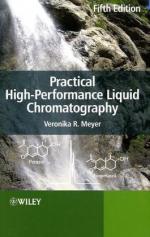|
This section contains 544 words (approx. 2 pages at 300 words per page) |

|
Chromatography is the process of separating mixtures of chemicals into individual components as a means of identification or purification. It derives from the Greek words chroma, meaning color, and graphy, meaning writing. The word was coined in 1906 by the Russian chemist Mikhail Tsvett who used a column to separate plant pigments. Currently chromatography is applied to many types of separations far beyond those of just color separations. Common chromatographic applications include gas-liquid chromatography (GC), liquid-solid chromatography (LC), thin layer chromatography (TLC), ion exchange chromatography, and gel permeation chromatography (GPC). All of these methods are invaluable in analytical environmental chemistry, particularly GC, LC, and GPC.
The basic principle of chromatography is that different compounds have different retentions when passed through a given medium. In a chromatographic system, one has a mobile phase and a stationary phase. The mixture to be separated is introduced in the mobile phase and passed...
|
This section contains 544 words (approx. 2 pages at 300 words per page) |

|


